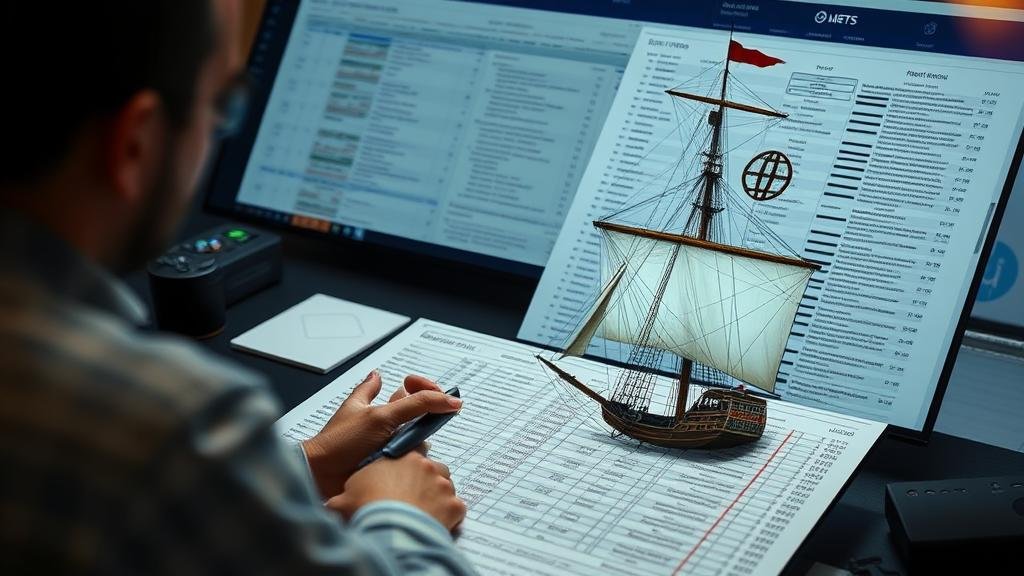Training AI Models to Identify Unusual Patterns in Historical Maritime Logs
Training AI Models to Identify Unusual Patterns in Historical Maritime Logs
The maritime industry produces a vast amount of data through historical logs, which provide crucial insights into navigation, shipping routes, and the economic landscape of maritime trade. Recent advancements in artificial intelligence (AI) and machine learning (ML) have opened new avenues for the analysis of this data, enabling researchers to uncover unusual patterns that can inform shipping practices and enhance maritime safety. This article explores the methodologies for training AI models to identify unusual patterns in historical maritime logs, underscoring their significance and application in contemporary maritime studies.
Understanding Historical Maritime Logs
Historical maritime logs are records maintained by ship crews, detailing voyages, weather conditions, engine performance, cargo, and other pivotal data. e logs span centuries, with significant entries dating back to the Age of Exploration in the 15th century. For example, logs from Captain James Cooks expeditions in the 18th century provide a basis for understanding navigation practices and environmental conditions of the time.
Maritime logs are a rich resource for analyzing patterns related to:
- Trade routes
- Ship performance
- Environmental changes
- Maritime accidents
The Role of AI in Analyzing Maritime Data
Artificial intelligence, particularly machine learning algorithms, offers robust tools for processing and analyzing large datasets, including historical maritime logs. By training models on this data, researchers can recognize and categorize anomalous patterns that may indicate potential risks or opportunities within maritime operations.
One notable example is the application of AI in identifying deviations in shipping routes associated with piracy incidents. A study by Gowers and associates (2019) utilized an AI model to analyze vessel movements and pinpoint atypical detours, correlating these with reported piracy events off the coast of Somalia. This analysis revealed a clear pattern of route alterations that preceded piracy attacks, providing valuable insights for risk mitigation.
Methodologies for Training AI Models
To effectively harness AI in identifying unusual patterns in maritime logs, several steps must be followed:
- Data Collection: Gather comprehensive datasets from reliable sources, including historical ship logs, satellite tracking systems, and maritime databases.
- Data Preparation: Clean and preprocess the data, ensuring it is structured and free from inconsistencies. This includes handling missing data and standardizing formats.
- Feature Engineering: Develop features that capture essential characteristics of the data, such as time of day, geographic coordinates, and environmental factors like wind speed and sea level.
- Model Selection: Choose appropriate machine learning algorithms that fit the nature of the data and the specific patterns researchers aim to identify. Common algorithms include Decision Trees, Random Forests, and Neural Networks.
- Training and Validation: Split the dataset into training and validation sets to evaluate model performance. Techniques such as cross-validation can enhance model robustness.
- Deployment and Monitoring: Deploy the trained model in real-world applications, continuously monitoring its performance and making necessary adjustments as new data becomes available.
Challenges in AI Useation
Despite the benefits of using AI in maritime log analysis, several challenges persist:
- Data Quality: Inconsistencies in historical logs can obscure patterns, necessitating rigorous data cleaning.
- Domain Expertise: Effective interpretation of AI outputs requires a deep understanding of maritime operations and historical contexts.
- Integration with Existing Systems: Useing AI solutions within traditional maritime systems can be complex, requiring compatibility with legacy technologies.
Real-world Applications and Future Directions
The implementation of AI in maritime log analysis presents numerous practical applications:
- Enhancing navigation safety by identifying unusual patterns that deviate from historical norms.
- Supporting decision-making in route planning by predicting potential hazards based on past incidents.
- Optimizing freight operations by analyzing shipping patterns and identifying under-utilized routes.
Future research may focus on integrating AI models with real-time data feeds, enhancing predictive capabilities to a new level. Also, the incorporation of natural language processing (NLP) could facilitate analyzing the qualitative aspects of maritime logs, thereby enriching pattern recognition endeavors.
Conclusion
Training AI models to identify unusual patterns in historical maritime logs not only illuminates past maritime practices but also enhances the safety and efficiency of modern shipping operations. As technologies evolve, the maritime industry stands to gain significantly from the insights provided by AI-driven analyses. Continued investment in research and the development of integrated systems will be vital for harnessing the full potential of these innovative technologies.
Ultimately, the collaboration between maritime experts and data scientists will forge pathways to a smarter, safer maritime future.



